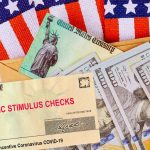In a move that could reshape how millions of Americans shop for groceries, the U.S. Department of Agriculture (USDA) has approved new rules restricting what foods can be purchased with SNAP benefits. Six additional states—Texas, Oklahoma, Louisiana, Colorado, Florida, and West Virginia—will join a growing list of states that are limiting access to processed and sugary foods under the Supplemental Nutrition Assistance Program.
The announcement was made on August 4, 2025, in Washington, D.C., by Health and Human Services Secretary Robert F. Kennedy Jr. and Agriculture Secretary Brooke Rollins, who signed the waivers that will take effect beginning in 2026.
This controversial update is part of the national health campaign “Make America Healthy Again”, a federal initiative designed to encourage healthier eating habits and curb the rising tide of diet-related illnesses such as obesity, diabetes, and heart disease.
What Is the SNAP Program?
The Supplemental Nutrition Assistance Program (SNAP), commonly known as food stamps, is the largest federal food assistance program in the United States. It provides monthly benefits to low-income families, seniors, and individuals with disabilities to purchase food using an Electronic Benefit Transfer (EBT) card.
Managed by the USDA’s Food and Nutrition Service, SNAP supports millions of households nationwide. Eligibility is determined by income level, household size, and allowable expenses, and benefits are distributed electronically each month.
According to 2023 data, more than 42 million Americans relied on SNAP each month—representing about 12.5% of the U.S. population.
While SNAP was originally designed to ensure access to affordable food, growing concerns about public health have led lawmakers to question whether federal funds should support the purchase of items such as soda, candy, and other low-nutrient, high-sugar products.
States Approved for New SNAP Food Restrictions
The six newly approved states represent the second wave of federal waivers granted in 2025. The first wave, announced earlier this year, included Arkansas, Idaho, Indiana, Iowa, Nebraska, and Utah.
Together, these 12 states now form the vanguard of what could become a nationwide transformation in food assistance policy.
Here’s what the August approval means for the six new states:
| State | What Will Be Restricted |
|---|---|
| Texas | Soda, candy, and processed snacks |
| Oklahoma | Sugary snacks and drinks |
| Louisiana | Soda and candy |
| Colorado | Select processed foods |
| Florida | Soft drinks, candy, and prepared desserts like cakes |
| West Virginia | High-sugar beverages and snacks |
Earlier approvals brought restrictions in six other states:
- Arkansas – Juice drinks with less than 50% fruit/vegetable juice banned.
- Iowa – Most taxable snack items, including gum, blocked (seeds and plants exempt).
- Nebraska, Utah, Idaho, Indiana – Similar bans on soda, candy, and energy drinks.
By 2026, at least 12 states will actively restrict SNAP purchases, marking the most significant change to the program in decades.
What Foods Are Being Banned?
While the exact restrictions vary by state, the focus is clear: eliminating or reducing access to processed, sugary, and nutrient-poor foods.
Most states’ waivers ban SNAP use for:
- Soft drinks and soda
- Candy and chocolate
- Energy drinks
- Desserts and sweet baked goods
Some states have gone further:
- Florida: Extending restrictions to prepared desserts such as cakes, pies, and packaged bakery items.
- Iowa: Blocking most “taxable food items”, leaving only unprocessed staples, seeds, and plants eligible.
- Arkansas: Targeting juice blends with less than 50% natural fruit or vegetable content.
The bans, while narrow in focus, reflect a broader philosophy: that federal nutrition dollars should fund healthy, whole foods rather than products linked to chronic disease.
Why Are These Changes Being Made?
The changes are part of the federal campaign “Make America Healthy Again,” a public health initiative that prioritizes long-term wellness over short-term convenience.
Supporters argue the new restrictions are common sense. Taxpayer-funded benefits, they say, should not support foods that actively harm public health.
In announcing the decision, Secretary Robert F. Kennedy Jr. said:
“Taxpayer dollars should support real nutrition, not fuel the epidemics of diabetes and heart disease. SNAP is a lifeline, and it must also be a pathway to healthier lives.”
Backing him were FDA Commissioner Dr. Marty Makary and Agriculture Secretary Brooke Rollins, who emphasized that cutting access to sugary and processed products would be especially beneficial for children growing up in SNAP households.
When Will the Changes Start?
Implementation will occur in two waves:
- Late 2025 / Early 2026 – States from the first approval group (Arkansas, Idaho, Indiana, Iowa, Nebraska, Utah).
- 2026 – Second group of states (Texas, Oklahoma, Louisiana, Colorado, Florida, West Virginia).
| Year | States with SNAP Restrictions |
|---|---|
| 2025 (Active) | Arkansas, Idaho, Indiana, Iowa, Nebraska, Utah |
| 2026 (New) | Texas, Oklahoma, Louisiana, Colorado, Florida, West Virginia |
More states are expected to apply for waivers in the coming year, potentially accelerating the shift toward nationwide reform.
The Debate: Nutrition vs. Freedom of Choice
Not everyone supports the changes. Critics argue that restricting purchases could stigmatize SNAP recipients, making it harder for them to shop like other customers.
Advocacy groups warn that banning products creates an unnecessary “nanny state” dynamic and may increase logistical challenges for grocery stores, which must program registers to block restricted items.
Supporters counter that the bans don’t limit access entirely—people can still buy restricted foods with personal funds—but they prevent taxpayer subsidies from being spent on items widely recognized as unhealthy.
The clash underscores a deeper question: Should food assistance programs dictate what Americans eat, or simply ensure they don’t go hungry?
Impact on Grocery Stores and Food Manufacturers
Grocery retailers will need to reprogram checkout systems to automatically block restricted items from being purchased with SNAP EBT cards. While large national chains may adapt easily, smaller regional stores could face technical and financial challenges.
Meanwhile, food manufacturers—especially soda and candy companies—are bracing for reduced sales in affected states. Some are lobbying against the restrictions, arguing that SNAP purchases represent a substantial share of their market.
Potential National Expansion
If the restrictions show measurable success in improving health outcomes or reducing SNAP spending on processed items, the federal government could expand the model nationwide.
Health policy experts suggest a phased rollout across all 50 states is possible within the next decade, though political resistance will remain strong in states prioritizing personal choice.
5 FAQs
Q1: Which states are banning processed foods under SNAP?
A1: By 2026, restrictions will apply in Texas, Oklahoma, Louisiana, Colorado, Florida, West Virginia, Arkansas, Idaho, Indiana, Iowa, Nebraska, and Utah.
Q2: What foods are being restricted?
A2: Primarily soda, candy, energy drinks, desserts, and other processed snacks, with some states going further to block juices, gum, and bakery items.
Q3: Why are these SNAP changes happening?
A3: To promote healthier diets and reduce taxpayer spending on foods linked to diabetes, obesity, and heart disease.
Q4: When do the changes take effect?
A4: The first six states will enforce restrictions in late 2025/early 2026, while the newly approved six states will implement rules in 2026.
Q5: Can SNAP users still buy these foods with cash?
A5: Yes. The restrictions only apply to SNAP benefits; individuals can purchase restricted items using personal funds.











